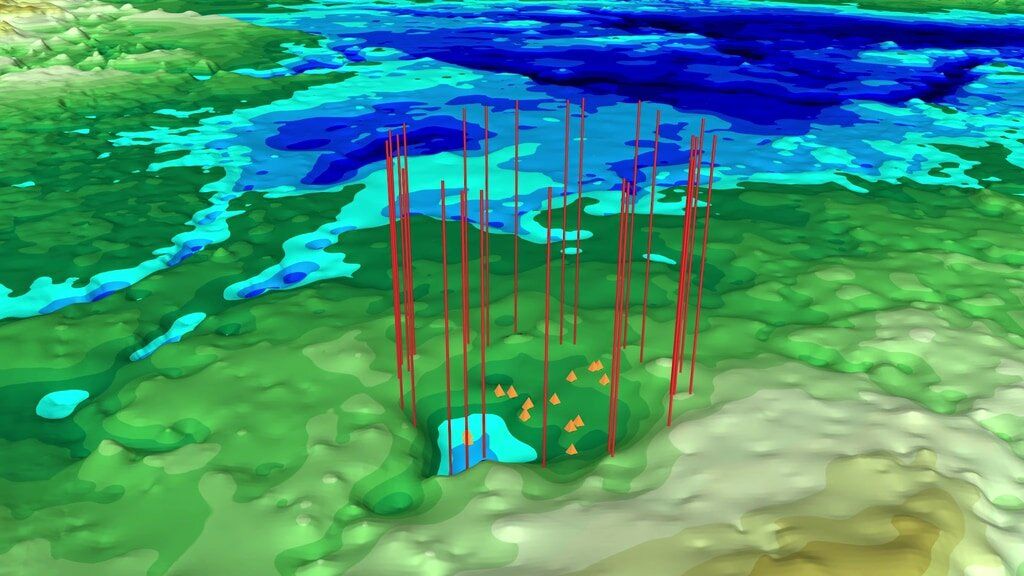
Last November, researchers announced that they had uncovered evidence of a vast 19-mile-wide impact crater deep below the ice sheets of northwest Greenland. Now, scientists may have uncovered another one just over 100 miles away, according to a study published in the journal Geophysical Research Letters.
The authors of the latest paper, led by NASA glaciologist Joseph MacGregor, say that it is "increasingly rare" to find new large impact craters on Earth, let alone ones buried beneath ice. In fact, the crater announced in November—known as the Hiawatha impact crater—was the first to be discovered underneath one of Earth's two continental ice sheets.
The potential crater described in the latest study is buried beneath more than a mile of ice, according to the researchers. It is circular in structure and measures around 22 miles wide—slightly larger than its neighbor.
While the newly found structure has not yet been confirmed as an impact crater, researchers say that its shape and geophysical properties indicate it likely is one.
If scientists are able to confirm that it was created by a falling meteorite, the crater would become only the second to be found underneath either the Greenland or Antarctic ice sheets. It would also rank as the 22nd largest known impact crater on Earth.
"We've surveyed the Earth in many different ways, from land, air and space—it's exciting that discoveries like these are still possible," MacGregor, who was involved in both discoveries, said in a statement.
Previously most scientists thought that any evidence of past impact craters in Greenland would have been completely destroyed by the eroding force of the ice. However, emboldened by the discovery of Hiawatha, MacGregor and his team set out to look for more.
To do this they examined topographic maps depicting the terrain below the island's vast ice sheets, as well as satellite imagery of the ice surface, uncovering a circular pattern some 114 miles southeast of the Hiawatha crater.
"I began asking myself, 'Is this another impact crater? Do the underlying data support that idea?'" MacGregor said. "Helping identify one large impact crater beneath the ice was already very exciting, but now it looked like there could be two of them."
On closer inspection of raw radar images, MacGregor noticed several features that indicated the presence of a crater—such as a flat, bowl-shaped depression in the bedrock and an elevated rim.
"The only other circular structure that might approach this size would be a collapsed volcanic caldera," MacGregor said. "But the areas of known volcanic activity in Greenland are several hundred miles away. Also, a volcano should have a clear positive magnetic anomaly, and we don't see that at all."
Uncommon Knowledge
Newsweek is committed to challenging conventional wisdom and finding connections in the search for common ground.
Newsweek is committed to challenging conventional wisdom and finding connections in the search for common ground.
About the writer
Aristos is a Newsweek science reporter with the London, U.K., bureau. He reports on science and health topics, including; animal, ... Read more
To read how Newsweek uses AI as a newsroom tool, Click here.








